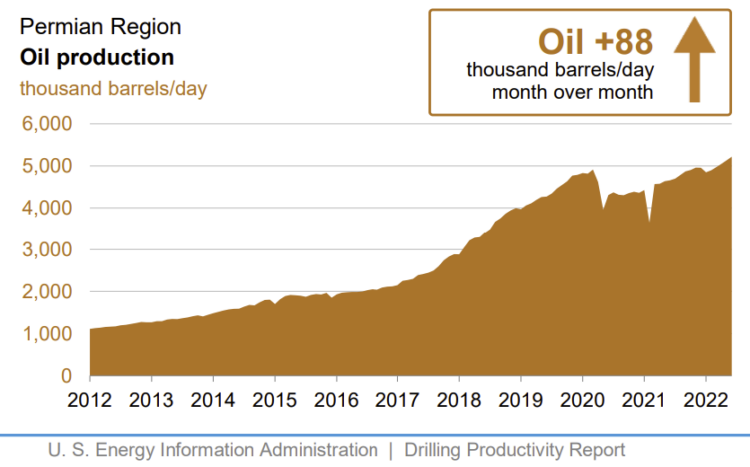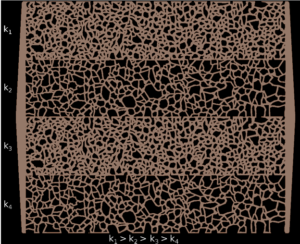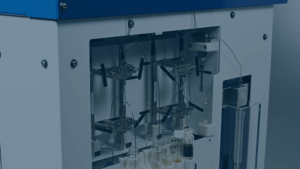Commercial microfluidic screening from Interface Fluidics is prime for use in the enhanced oil recovery (EOR) of unconventional reservoirs. Comprehensive case studies published in OnePetro detail the technology’s capabilities and advantages.
EOR can generally be divided into chemical, thermal, and gas injection methods. For unconventional reservoirs like the Permian Basin, CO2 injection and surfactant-based chemical EOR have been reported as the most effective.
However, traditional core flooding is limited when screening unconventional plays since the lower permeabilities exponentially increase differential pressures and time required for hydrocarbons to flow. Modified core flooding addresses this but has high variability, so fails to compare chemical variations accurately.
Interface uses microfluidic technology that can help operators by screening different polymers, surfactants, CO2 foams, and other fluids for EOR. For gas injection, measurement of the minimum miscibility pressure (MMP) of various injected gas compositions and oils is a popular service we offer.
The measurements are repeatable where the chips accurately mimic pore throat size distribution, permeability, porosity, and wettability at reservoir conditions. Pore sizes can be replicated with 50-nm precision to reflect shale confinement, which can be 1,000 times smaller than sandstone. Best yet, high-resolution optical access enables first-of-its-kind visual quantification of performance variables in real-time.
Using the first such commercialized system, Interface has worked with multiple Permian Basin operators to enhance their hydrocarbon recovery.
The old, the new and the novel
In 1920, a dribble of oil (10 bbl/day) spurred a flurry of exploration in the Permian Basin. Most early discoveries were from carbonate reservoirs which led to production peaking in 1973. This was followed by a steady decline until the combination of horizontal drilling, water flooding, and CO2 injection came along.
The consequent upsurge in activity led to the basin becoming one of the highest-producing regions in the world.
Given the limitations of conventional testing, a phenomenal opportunity exists for further optimization of operational variables using Interface’s technology.
With our microfluidic systems, Permian Basin companies have found they can tweak their fracturing fluid, EOR and carbon capture utilization and storage (CCUS) processes – leading to cost, time and emission reductions.
Carbon injection: a critical overview
Located in the southern U.S., the Permian Basin is also one of the most prolific regions in the world for CO2-EOR projects. This includes reservoirs that are responsive to CO2 flooding and the proximity of high purity natural carbon dioxide sources.
While discussion of the potential of carbon-negative oil continues, CO2-EOR is leading the way. It’s currently responsible for 20% of total EOR oil production – with the added benefit of injecting 300-600 kg of the greenhouse gas (GHG) per oil barrel produced.
In CO2-flooding, injected pressurized carbon dioxide causes trapped oil to flow more easily to the wellhead. It’s been shown to increase oil and gas recovery by 10-25%. After production, the gas is recovered and re-injected in a closed loop. By the end, virtually all introduced carbon dioxide is trapped underground.
Multiple sources (including the World Energy Outlook) place CCUS as a central actor in supporting a low-carbon energy future.
However, for CO2-EOR to proliferate, more robust methodologies are needed to accurately mimic the behavior of injected gas streams at reservoir conditions. MMP screening is crucial for staying within the correct pressure zone. The MMP of the injected gas must be lower than the reservoir pressure to ensure that miscible displacement occurs, improving overall recovery.
Another challenge is ensuring the CO2 is from anthropogenic emissions. Around 70% of EOR uses carbon dioxide from natural sources. This practice favours carbon injection for its economic benefits via increased oil yield and cheap CO2 but disregards sustainability impetus.
Interface’s microfluidics MMP measurement supports gas injection operations in the following ways:
- It optimizes the blending of multiple gas streams and industrial carbon dioxide
- It provides access to rapid, low-cost, high-quality data
- It increases the number of MMP measurements taken, eliminating the need for interpolation
- Tests are repeatable and run at reservoir conditions.
- It offers visual insight into oil displacement, solvent-oil interface phenomena, and asphaltene deposition
- It has achieved a 99% reduction in sample size, 95% reduction in time, and 20x increase in the number of data points against traditional slim tube tests
Recently, the U.S. Environmental Protection Agency gave the green light to the largest carbon capture and storage (CCS) project in the Permian to date. This venture will see 500,000 tonnes of carbon and H2S sequestered annually.
Furthermore, a single frac well in the Permian Basin can use an astounding amount of water. This means a switch to produced water with high salinity is important for freshwater security. Screening chemical performance, is another area where Interface provides great value.
An unconventional basin and the Interface contribution
With more than half of North American oil rigs located in the Permian Basin, it has a considerable impact on U.S. oil production. However, the basin also exhibits rock characteristics that result in low primary recovery, typically hovering at less than 10%. This means there is significant EOR potential surfactants as they can alter wettability and capillary pressure – a driver for oil production via spontaneous imbibition.
Interface’s proprietary devices utilize optical access with advanced accuracy. When used for EOR screening, this enables the identification of residual oil saturation, viscous fingering, fluid-front dynamics, solid precipitation, emulsions, and polymer retention.
Interface has also contributed to research that involved a set of chemical EOR trials in the Permian Basin for unconventional reservoirs. Addressed here is declining oil recovery due to ultra-low permeability, low porosity, and the oil-wet nature of the reservoir rock.
The study screened a set of surfactants for Wolfcamp A, Wolfcamp B, and Spraberry unconventional oil reservoirs. The effect of chemistry on wettability alteration and the intensity of microfractures on chemical performance were evaluated.
Using Interface’s reservoir chips to gather the data, a specific chemical formulation emerged with the ability to persistently alter wettability, significantly increasing oil recovery while mitigating emulsion issues.
Applying the derived chemistry in an EOR completion trial resulted in a 39% increase in cumulative recovery relative to the county type curve and 14% above the Delaware Basin type curve.
Advances in flowback
Another important technology for unconventional reservoirs is flowback fluid testing. The screening service helps increase hydrocarbon recovery while reducing fracturing fluid costs and avoiding damage.
Here, Interface helps operators realize additional recovery by optimizing fluid performance. This includes identifying top fluid additives and quantifying their relative performance and compatibility with other fluids.
One of our studies focused on evaluating state-of-the-art surfactants for unconventional reservoirs in the Permian Basin. These additives are used to reduce interfacial tension to relieve obstructive capillary forces.
Fluid-fluid and rock-fluid interactions occurring at the nanopore scale and their implications on EOR were assessed. In this effort, a heterogeneous dual-porosity dual-permeability microfluidic device was designed using pore geometries representative of Wolfcamp shale formations.
This work was the first to visualize the mechanisms behind flowback processes for hydraulic fracturing at the nanoscale. The developed platform proved a cost-effective alternative to core flooding for screening chemical additives to the flowback process.
Working with Interface Fluidics
Comprehensive analyses by Interface with work relevant to Permian Basin operations show substantial technical and financial implications.
Using Interface’s unique screening capabilities, energy companies can now make better-informed decisions by replicating actual reservoirs to visualize and analyze fluid behavior at the pore scale. This results in better EOR and fracturing fluid optimization for unconventional reservoirs.
Clients who utilize Interface’s innovative technology find they can now make smarter and faster decisions – allowing for cost-cutting and decreases in chemical and water consumption. To find out more about our technology, check out our video on device design for U.S. reservoirs.





